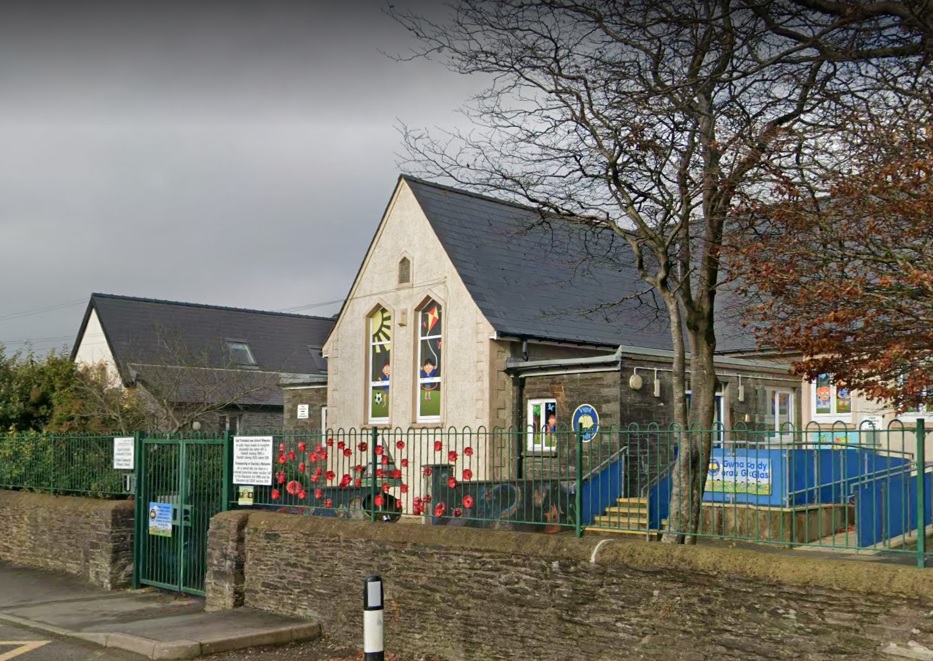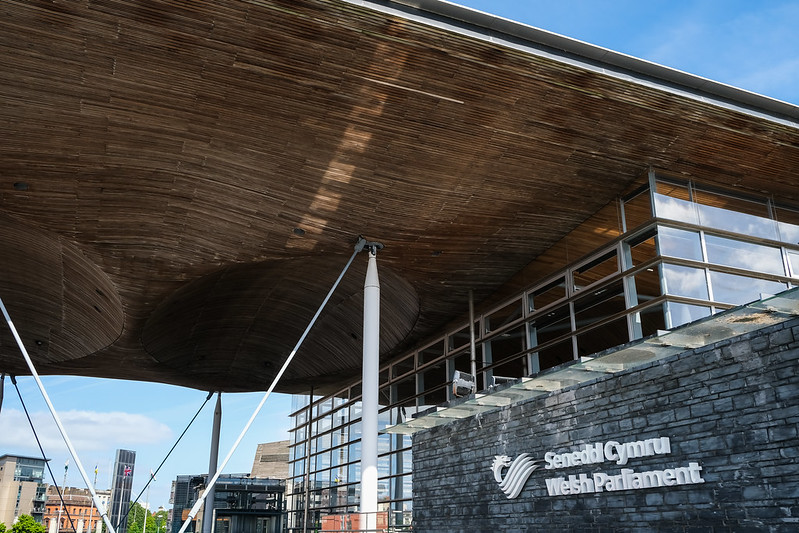Education
Stonehenge may have been built to unify the people of ancient Britain

THE RECENT discovery that one of Stonehenge’s stones originated in Scotland supports a theory that the stone circle was built as a monument to unite Britain’s early farmers nearly 5,000 years ago, according to a new study by researchers at UCL and Aberystwyth University.
In a research article published in the journal Archaeology International, academics analyse the significance of the recent discovery of the Scottish origin of the six-tonne Altar Stone, which confirmed that all of the stones that make up Stonehenge were brought to Salisbury Plain from many miles away.

In their new paper, the researchers say that Stonehenge’s long-distance links add weight to the theory that the Neolithic monument may have had some unifying purpose in ancient Britain.
Lead author Professor Mike Parker Pearson from the UCL Institute of Archaeology said: “The fact that all of its stones originated from distant regions, making it unique among over 900 stone circles in Britain, suggests that the stone circle may have had a political as well as a religious purpose – as a monument of unification for the peoples of Britain, celebrating their eternal links with their ancestors and the cosmos.”
Co-author Professor Richard Bevins of Aberystwyth University, said: “It’s really gratifying that our geological investigations can contribute to the archaeological research and the unfolding story as our knowledge has been improving so dramatically in just the last few years.
“Our research is like forensic science. We are a small team of earth scientists, each bringing their own area of expertise; it is this combination of skills that has allowed us to identify the sources of the bluestones, and now the Altar Stone.”
The study has been published (on 20 December) the day before the winter solstice, when the setting sun dips below the horizon over the middle of the Altar Stone and between the two largest upright stones (one of which is now fallen). During this winter period, Neolithic people feasted close to Stonehenge at the great village of Durrington Walls, and the midwinter solstice was probably central to these events.
Stonehenge is famous for these solar alignments on the solstice and even today attracts large crowds to the site on the shortest and longest days of the year. In addition, it was also the largest burial ground of its age. Some archaeologists think it might have been a religious temple, an ancient observatory and a solar calendar, and this new research adds a political dimension.
Professor Parker Pearson, a Professor of British Later Prehistory, added: “We’ve known for a while that people came from many different parts of Britain with their pigs and cattle to feast at Durrington Walls, and nearly half the people buried at Stonehenge had lived somewhere other than Salisbury Plain.
“The similarities in architecture and material culture between the Stonehenge area and northern Scotland now make more sense. It’s helped to solve the puzzle of why these distant places had more in common than we might have once thought.”
Stonehenge’s 43 ‘bluestones’ were brought from the Preseli Hills in west Wales some 140 miles away, while the larger ‘Sarsen’ stones were hauled from their sources at least 15 miles away to the north and east of the stone circle.
Transporting these massive monoliths was an extraordinary feat. Although the wheel had been invented, it had not yet reached Britain so moving these massive stones must have required the efforts of hundreds if not thousands of people.
The researchers point to how Stonehenge’s horizontal Altar Stone is similar in size and placement to the large, horizontal stones of the stone circles of northeast Scotland, where the Altar Stone originated.
These ‘recumbent stone circles’ are found only in that part of Scotland and not in the rest of Britain, so there may have been close ties between the two regions. Megalithic stones had ancestral significance, binding people to place and origins. The Altar Stone may have been brought as a gift from the people of northern Scotland to represent some form of alliance or collaboration.
It is difficult to pin down a precise date when the Scottish Altar Stone was brought to Stonehenge, but it probably arrived around 2500 BCE around the time that Stonehenge was remodelled from its original form.
This is the timeframe when the Neolithic builders erected the large sarsen stones forming an outer circle and the inner horseshoe of trilithons – paired upright stones connected by horizontal ‘lintels’ – that is present today. The Altar Stone lies at the foot of the largest trilithon, which frames the midwinter solstice sunset to the southwest. This was the second stage of construction at Stonehenge, long after the first stage (around 3000 BCE) when it is thought the bluestones from Wales were erected.
This second iteration of Stonehenge was built at a time of increasing contact between the people of Britain and arrivals from Europe, mainly from what are today the Netherlands and Germany. The researchers suggest that this period of contact may have been what spurred this second-stage rebuilding, and the monument was a reaction to these newcomers meant to unite indigenous Britons.
The new arrivals brought with them knowledge of metalworking and the wheel and, over the next four hundred years, their descendants – known as the Beaker people on account of the distinctive pots they buried with their dead – gradually replaced the population of indigenous Britons, and people with this European ancestry became the dominant population across the island.
The geological research was supported by the Leverhulme Trust.
Ends
Picture: The Altar Stone, seen here underneath two bigger Sarsen stones. Credit: Professor Nick Pearce, Aberystwyth University.
Community
Pleas to save fire-ravaged Manorbier school site heard

A PLEA for councillors to not act as “judge, jury and executioner” when the potential closure of fire-ravaged Manorbier is decided upon next year was heard at full council.
At the December meeting of Pembrokeshire County Council, members received a petition opposing the potential closure of Manorbier School.
Manorbier Church in Wales VC School and its adjoining schoolhouse was severely damaged by a fire on October 11, 2022, which broke out in the school roof space.
After that, a ‘school from school’ was set up in Jameston Village Hall.
It had been hoped the school would be rebuilt, but earlier this year members of Pembrokeshire County Council backed a report of the School Modernisation Working Group which, amongst other recommendations, included a statutory consultation on proposals to discontinue Manorbier Church in Wales Voluntary Controlled School.
The decision attracted strong local opposition, with more than 1,500 people signing a petition on the council’s own website calling for the school to be rebuilt, meaning it passed the threshold for a formal hearing by members of the council.
The formal consultation for the discontinuation of Manorbier closes in just a few days on December 19.

However, many of the council’s figures, especially on the level of surplus places at the school, have been strongly disputed.
Speaking at the December meeting, Richard Hughes, of Manorbier Community Council, said the council consultation was “deeply flawed and unlawful,” the quoted capacity figures after the fire damaged the original building “null and void,” with a true surplus of some 21 per cent.
“The school is clearly thriving under less-than-ideal conditions, your report claims 59 per cent [surplus], it’s misleading and artificial.”
He said the council was acting as “judge, jury and executioner” in its “deeply flawed” consultation.

Local member Cllr Phil Kidney said the staff, parents and pupils had been “living this process for three years,” adding: “At worst light we were misled for three years, living under this shadow, it’s not fair.
“We’ve been promised all along ‘we will rebuild this school; no matter what we do we will have to spend on this school, we have to hand it back in [a useable] condition.
“How members of staff have worked under these conditions for three years is amazing, the service they are providing in that school is fantastic.”
He criticised the consultation wording, feeling it painted Manorbier in an unfair light, saying it was stacked heavily in favour of St Florence school in a submitted question heard later at the meeting.
“We do feel there’s a hidden agenda, nothing more than a boost for St Florence school; we were led to believe was all about the positives and the negatives for the school; we have lost the trust in the director of education, we still feel we’re not been listened to.”
He said it was important councillors, when a final vote on Manorbier’s future, expected in March, keep an open mind “not just going along with the narrative: ‘We can’t afford it, and the figures are going down’.”
He went on to say: “We want to get the right vote, the moral vote, and get the school rebuilt.”

Cabinet member for education Cllr Guy Woodham praised the work at the school following the fire, saying he intended to “set the facts out” when it came to a final decision.
Leader of the independent group Cllr Huw Murphy said: “It just doesn’t sit right with me to close a school that has burned to the ground. Yes, we will respect the decision in March, however we haven’t handled the decision well. We need to do what’s right, and we haven’t done what’s right for Manorbier.”
Members agreed to note receipt of the petition prior to the final report before council in 2026.
Later in the meeting, Cllr Woodham disputed Cllr Kidney’s submitted question claim, Cllr Kidney telling Cllr Woodham: “We’ve put a lot of trust and faith in you on this consultation to make sure it’s fair and transparent. St Florence was referenced more times than our school, for a consultation I think it’s misleading.”
Cllr Woodham responded: “I will do my utmost to give a balanced report when I bring it back to full council.”
Community
Plea to save Tegryn Ysgol Clydau school heard by councillors

A PLEA to not “pluck the heart out of a community” by closing a Pembrokeshire village school was heard by councillors just days after a consultation into its future was launched.
At the December meeting of Pembrokeshire County Council, members received a petition opposing the potential closure of Ysgol Clydau, Tegryn, which had generated 648 responses on the council’s own website, meaning it crossed the threshold to be heard at full council.
A council statement accompanying the launch of the consultation said: “At its meeting on May 8, Pembrokeshire County Council considered a report of the School Modernisation Working Group which outlined the findings of a review of education provision in the Preseli area.
“In particular the review considered the extent of surplus school places in the area, set against a significant decline in the pupil population.”
The Ysgol Clydau petition states: “We demand that Pembrokeshire County Council reconsider its decision to close Ysgol Clydau and instead prioritise the needs of our community by keeping the school open. We oppose the closure of Ysgol Clydau and call for full public scrutiny before any decision is made.
“We urge you to engage in a meaningful dialogue with the community, listen to our concerns, and work with us to find alternative solutions that support the needs of our children and families.”

Speaking at the meeting on behalf of the petitioners, Sarah Farnden, in an emotive plea, said the school was “not just a school but a sanctuary, a nurturing environment,” which offered “warmth, belonging and safety”.
“A village without a school becomes a village without families, a village without families becomes a village without a future,” she told members, adding: “Ysgol Clydau is not in debt, it’s not overspent, we’ve done everything asked of us, so why are we being punished?
“There has been a school on this site for 145 years, if you close Ysgol Clydau you are not closing a building you are closing a heritage; we are not here to fight you, we are here to beg you.”

Local member Cllr Iwan Ward said: “The decision of Pembrokeshire County Council to release this consultation on the closure a few days before Christmas is extremely disappointing, a time of year families should be concentrating on being together, not a time to have to face the threat of losing the heart of our community.”
To applause from the gallery, he added: “It’s not a matter of numbers on a paper, it’s a moral matter; the school is much more than four walls, it’s a safe place for children to grow and a cornerstone of community spirit.
“Closing a school like this rips the heart out of rural life, to threaten a school that isn’t failing is an action I cannot, and am not willing to, take quietly.
“I will stand with the staff, the governors, and the children also.”
Members heard the consultation had been expected to launch back in September but had been delayed due to staffing issues; its 42-day period due to now end in late January.
Members agreed to note the petition ahead of the consultation end, recommendations on the school’s future expected to be decided in March.
The final word went to Sarah Farnden, who said: “We’re not asking for special treatment, we’re asking for fairness and compassion; do not pluck the heart out of the community.”
Education
School leaders deliver Christmas cards to Senedd calling for fair funding

SCHOOL leaders from across Wales are delivering Christmas cards to the Senedd today in a symbolic call for fair funding for schools.
The cards, one for every Senedd member, are being delivered by school leaders’ union NAHT Cymru, urging politicians to give children in Wales what it describes as the “best Christmas gift” – a fully and fairly funded education.

NAHT Cymru national secretary Laura Doel and president Kerina Hanson are gathering outside the Senedd at 1:00pm today before handing the cards in at the Senedd reception.
The action follows the union’s warning last week that while £339m came to the Welsh Government as a result of increased education spending in England for the 2026/27 draft budget, only £39m has so far been allocated to core school budgets in Wales.
Earlier this week, an additional £112.8m was allocated to local government following a budget agreement between the Welsh Government and Plaid Cymru, with some of that funding expected to reach schools.
However, NAHT Cymru says the additional money will fall well short of what is needed. The Welsh Local Government Association has predicted a £137m shortfall in school budgets in Wales for the next financial year, while local authorities are also facing a £200m deficit in social care funding.
The union has also raised concerns that the First Minister has declined to explain how the £339m of additional education funding has been allocated, prompting calls for urgent and transparent scrutiny of the budget.
Speaking ahead of the card delivery, Laura Doel said: “Christmas is a time of giving, and we’re urging the Welsh Government to give schools in Wales the funding they rightfully deserve.
“The money that comes to Wales for education should be spent on education, yet we know much of it has never reached schools. We urgently need clarity on where this money has gone and to see greater investment going directly to pupils.
“The system is at breaking point, and without action we are facing an incredibly bleak new year for schools across Wales.
“We’re calling on every member of the Senedd to act this Christmas and give children in Wales the best possible gift – a fully and fairly funded education.”
The Welsh Government says education remains a priority, pointing to additional funding agreed with Plaid Cymru for local government, some of which is expected to support schools.
However, teaching unions and local authorities continue to warn that funding pressures remain severe.
-

 Crime16 hours ago
Crime16 hours agoMilford Haven man jailed after drunken attack on partner and police officers
-

 News4 days ago
News4 days agoDyfed-Powys Police launch major investigation after triple fatal crash
-

 Crime3 days ago
Crime3 days agoMan sent to Crown Court over historic indecent assault allegations
-

 Crime2 days ago
Crime2 days agoMan charged with months of coercive control and assaults
-

 Crime4 days ago
Crime4 days agoMan spared jail after baseball bat incident in Milford Haven
-

 Crime14 hours ago
Crime14 hours agoTeenager charged following rape allegation at Saundersfoot nightclub
-

 Crime2 days ago
Crime2 days agoMilford Haven man admits multiple offences after A477 incident
-

 Education7 days ago
Education7 days agoTeaching assistant struck off after asking pupil for photos of her body























